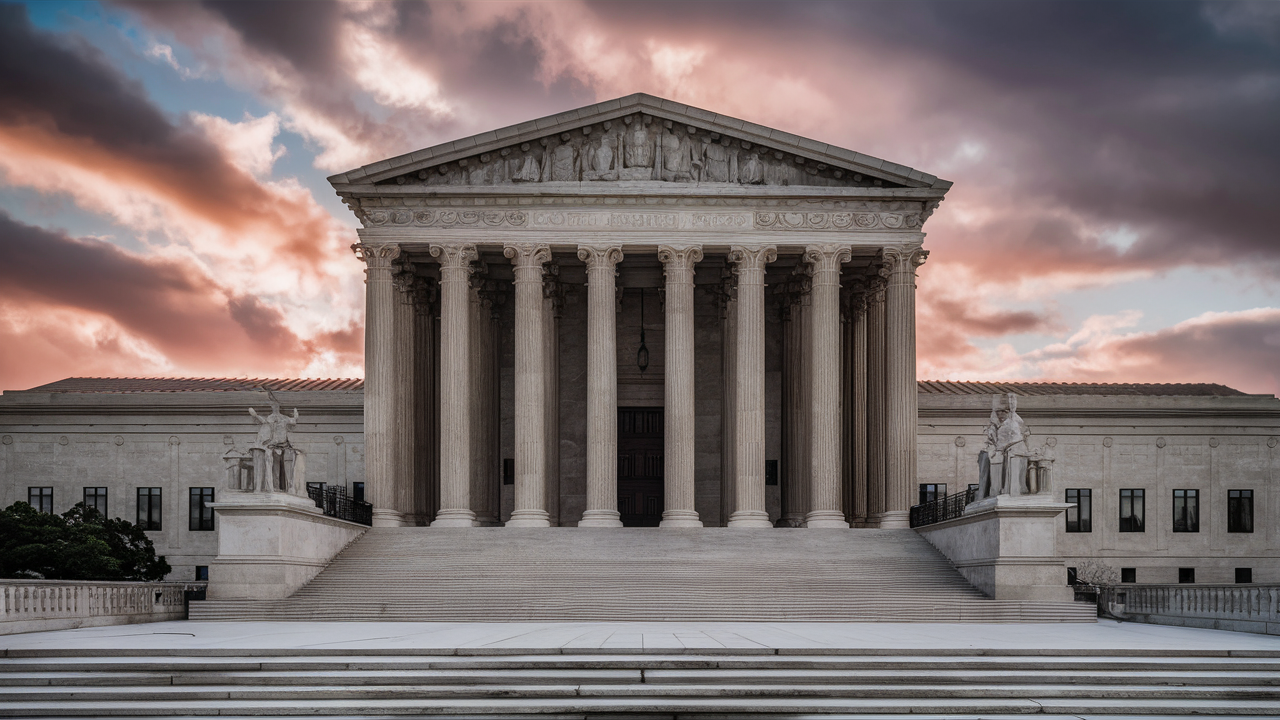
Introduction
In the hallowed halls of justice, where robed figures deliberate over the nation’s most profound legal quandaries, the Supreme Court stands as the ultimate arbiter. Its decisions reverberate through the corridors of history, shaping laws and lives alike. Among its many rulings, some cases stir the waters of public opinion more than others, igniting debates that echo for generations. These are the stories of the most controversial Supreme Court cases of all time, where legal reasoning and societal values clash in a spectacular judicial ballet.
Marbury v. Madison (1803)
Background of the Case
In the early dawn of the 19th century, the United States was a fledgling nation, still defining its governmental structures. William Marbury’s appointment as a justice of the peace was thwarted by Secretary of State James Madison, leading Marbury to seek judicial intervention. Thus began a legal confrontation that would forever alter the landscape of American law.
The Principle of Judicial Review
At the heart of Marbury v. Madison lies the doctrine of judicial review. Chief Justice John Marshall’s eloquent opinion asserted that the judiciary must say what the law is, empowering the Supreme Court to nullify congressional acts deemed unconstitutional. This principle established the Court as a co-equal branch of government, capable of checking legislative and executive powers.
The Decision’s Impact on American Law
This seminal case forged the bedrock of American constitutional law, ensuring that the judiciary could uphold the Constitution against overreach. The reverberations of this decision are felt to this day, as judicial review remains a cornerstone of legal scrutiny and balance.
Dred Scott v. Sandford (1857)
The Case’s Historical Context
The mid-19th century was a period of profound division in America, with the institution of slavery at the crux of national discord. Dred Scott, an enslaved African American man, sued for his freedom after residing in free territories. His quest for liberty reached the Supreme Court, which would deliver a decision that plunged the nation deeper into turmoil.
The Fight for Freedom
Scott’s plea was more than a personal battle; it symbolized the broader struggle for human dignity and rights. The Court, however, delivered a crushing blow to abolitionist hopes, declaring that African Americans could not be citizens and had no standing to sue in federal court.
Decision and Its Ramifications
Chief Justice Roger B. Taney’s opinion went further, striking down the Missouri Compromise and ruling that Congress had no authority to prohibit slavery in the territories. This decision not only denied Scott his freedom but also emboldened pro-slavery factions and pushed the nation closer to civil war.
Long-term Consequences for Civil Rights
The Dred Scott decision remains a stark reminder of the Supreme Court’s capacity to influence social and political landscapes. It highlighted the profound implications judicial rulings can have on civil rights, reverberating through history until the civil rights movement sought to rectify these wrongs.
Plessy v. Ferguson (1896)
Segregation and the Era of Jim Crow
In the aftermath of the Civil War, America grappled with the integration of formerly enslaved individuals into society. The era of Jim Crow laws emerged, enforcing racial segregation under the guise of equality. Homer Plessy’s challenge to Louisiana’s segregation laws set the stage for another landmark Supreme Court decision.
“Separate but Equal” Doctrine
The Court’s ruling in Plessy v. Ferguson enshrined the doctrine of “separate but equal,” legitimizing state laws that mandated racial segregation. Justice Henry Billings Brown’s opinion stated that segregation did not imply the inferiority of African Americans, a notion sharply contradicted by the reality of unequal facilities and opportunities.
The Court’s Ruling and Dissent
Justice John Marshall Harlan’s dissent famously declared, “Our Constitution is color-blind,” forecasting the eventual dismantling of segregation. However, for decades, the ruling provided judicial cover for widespread discrimination and oppression.
Legacy and Overturning of the Doctrine
The Plessy decision’s pernicious effects lingered until the civil rights era when Brown v. Board of Education (1954) overturned “separate but equal.” This case stands as a testament to the long struggle for racial equality and the enduring impact of Supreme Court rulings on societal norms.
Roe v. Wade (1973)
The Context of the Women’s Rights Movement
The 1970s marked a crescendo in the fight for women’s rights, with advocates pushing for greater control over reproductive health. Jane Roe, an alias for Norma McCorvey, challenged Texas laws criminalizing most abortions, sparking a legal battle that would redefine privacy rights.
Privacy and Bodily Autonomy
The Supreme Court’s decision in Roe v. Wade affirmed a woman’s right to choose an abortion under the constitutional right to privacy. Justice Harry Blackmun’s majority opinion balanced state interests with personal liberties, igniting a polarized debate that continues to this day.
The Ruling and Its Immediate Impact
The ruling struck down many state abortion laws, significantly altering the landscape of reproductive rights in America. Clinics and advocacy groups celebrated the decision as a monumental victory for women’s autonomy, while opponents galvanized around calls for its reversal.
The Ongoing Debate and Political Polarization
Roe v. Wade remains one of the most contentious Supreme Court decisions, with its legacy affecting elections, judicial appointments, and legislative battles. The debate over abortion rights epitomizes the clash between personal freedoms and moral convictions, a conflict that shows no signs of abating.
Citizens United v. Federal Election Commission (2010)
The Evolution of Campaign Finance Laws
Campaign finance has long been a contentious issue in American politics, balancing the need for transparency with the principles of free speech. Citizens United, a conservative non-profit organization, challenged restrictions on political expenditures by corporations and unions, leading to a groundbreaking Supreme Court decision.
Corporate Personhood and Free Speech
In a 5-4 decision, the Court held that corporate funding of independent political broadcasts in candidate elections cannot be limited under the First Amendment. Justice Anthony Kennedy’s majority opinion asserted that political speech is indispensable to democracy, regardless of the speaker’s corporate identity.
The Decision’s Impact on Elections
The ruling effectively dismantled previous restrictions on corporate and union spending, leading to a surge in political advertising and the rise of Super PACs. Critics argue that this has allowed wealthy individuals and organizations to wield disproportionate influence over elections, undermining democratic processes.
Continuing Controversies and Future Implications
Citizens United v. FEC remains a lightning rod for debates on money in politics, transparency, and democratic integrity. As calls for campaign finance reform persist, this case exemplifies the enduring tension between free speech and equitable political participation.
Conclusion
The Supreme Court’s controversial cases underscore its pivotal role in shaping the fabric of American society. From establishing judicial review to navigating the complexities of civil rights, reproductive freedom, and campaign finance, these decisions reflect the Court’s profound influence. As we ponder these landmark rulings, we are reminded of the delicate balance between law and society and the ongoing evolution of justice.
FAQs
What makes a Supreme Court case controversial?
Controversial Supreme Court cases often involve deeply divisive issues, significant social or political implications, and interpretations of the Constitution that challenge existing norms or values.
How does the Supreme Court decide which cases to hear?
The Supreme Court exercises discretionary jurisdiction, choosing to hear cases that have significant legal or public interest, conflicts in lower court rulings, or substantial constitutional questions.
Can Supreme Court decisions be overturned?
Yes, Supreme Court decisions can be overturned through constitutional amendments, subsequent rulings by the Court itself, or legislative changes that address the issues differently.
Why is the Supreme Court’s power significant in the U.S. legal system?
The Supreme Court’s power is significant because it serves as the final arbiter of constitutional interpretation, ensuring laws align with the Constitution and resolving conflicts that have wide-reaching impacts on society.
How do Supreme Court rulings reflect societal values?
Supreme Court rulings often mirror and influence societal values by addressing contemporary issues, reflecting public opinion trends, and sometimes catalyzing social change through their decisions.


